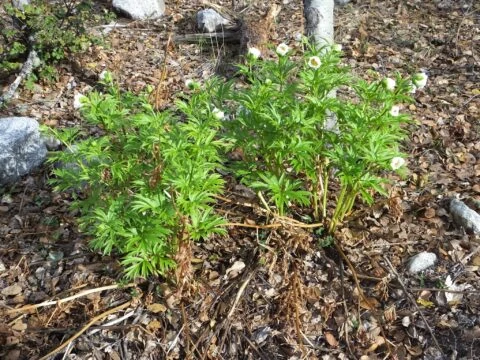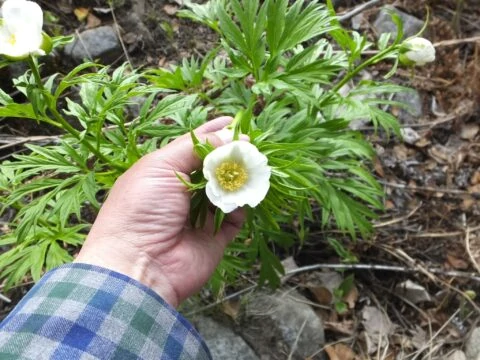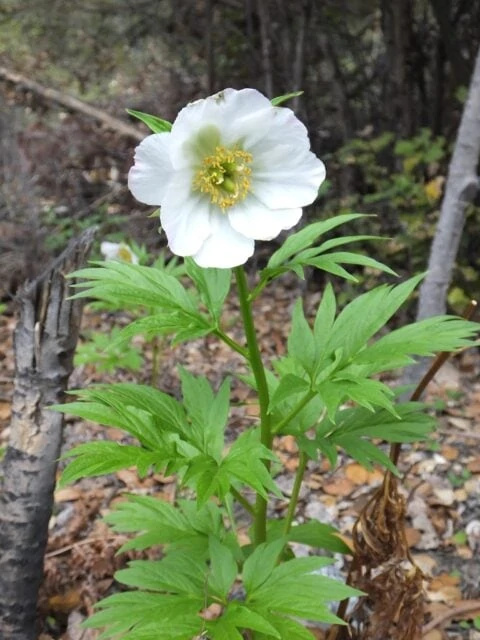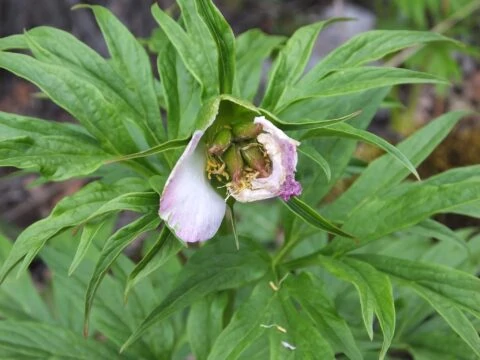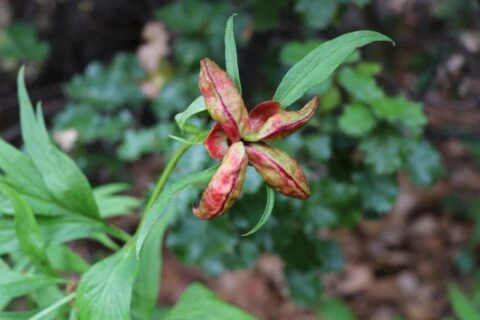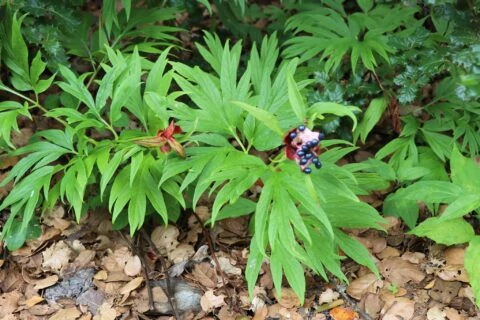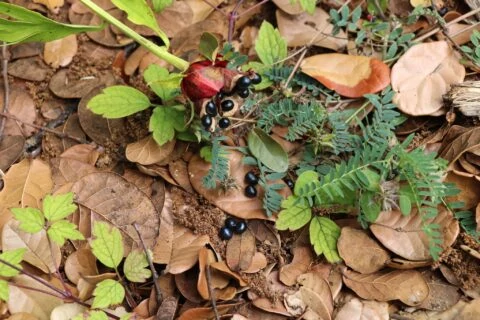[print_posts pdf=”yes” word=”yes” print=”no”]
Perennials, 35-60 cm tall, glabrous throughout. Roots carrot—shaped, tap roots up to 2 cm in diameter, more than 30 cm long. Caudex short, not elongated, multi—branched, and thus many stems caespitose. Scales at the base of stems 6-9 in number, pink. Lower leaves biternate; leaflets 9, the terminal three often more-or-less decurrent; all leaflets segmented; leaflets/leaf segments 20-30 in number, 4-12 cm long, 1.5-3 cm wide, often lobed; lobes acuminate at the apex. Flowers solitary, terminal, but one or two axillary undeveloped (sterile) buds often present, rarely 2 on a stem; involucrate bracts 2-4 in number, leaf—like; sepals mostly 3, rarely 4 in number, nearly rounded, all or mostly caudate at the apex, green or purple, 1-2.3 cm long, 0.8-2 cm wide; petals white to pale rose, obovate, 2.5-3 cm long. 1.5-2 cm wide; filaments yellow; anthers yellow; disk less than 1 mm high, waved, green—yellow; carpels mostly 2, less frequently 3, rarely 4 in number, green; styles less than 1 mm long, stigmas red, 1.2 mm wide. Follicles ovoid, c. 3 cm long. Seeds ovoid—oblong, black, lucid, 7-8 mm long, 5 mm in diameter.
Chromosome number: 2n = 10 (diploid).
Growing in forests or thickets at a high altitude of 2,830—3,500 m. Confined to SE Xizang (Tibet), China.
Paeonia sterniana is closely related to P. emodi. They share a number of characters: the roots carrot-shaped; sepals all or mostly caudate at the apex; leaflets mostly or all segmented; petals white; and plants entirely glabrous except for the carpels, which are mostly pubescent in P. emodi but glabrous in P. sterniana. Nevertheless, these two species distinctly differ from each other. Paeonia emodi often has two or three flowers on a stem, whereas P. sterniana nearly always has a single flower (occasionally two) and sometimes one or two axillary sterile buds on a stem. The carpels are single (93%), rarely two (7%) per flower, and nearly always tomentose in P. emodi, whereas there are two to four, always glabrous carpels in P. sterniana. Therefore, Halda’s (2004) treatment of P. sterniana as a subspecies in P. emodi cannot be justified.
There are hardly any images to be found of this species, so these are all from Dr. Carsten Burkhardt who visited one of the wild populations in 2006.
- By Carsten Burkhardt
- By Carsten Burkhardt
- By Carsten Burkhardt
- By Carsten Burkhardt
- By Carsten Burkhardt
- By Carsten Burkhardt
- By Carsten Burkhardt
- By Carsten Burkhardt
- By Carsten Burkhardt
- By Carsten Burkhardt
- By Carsten Burkhardt
- By Carsten Burkhardt
- By Carsten Burkhardt
- By Carsten Burkhardt
All images below:
Paeonia sterniana, only distributed in Bomi, Tibet, China, which is the narrowest distribution of all wild herbaceous peony species in China.
All images by Yong Yang in the Facebook group ‘Paeonia species (only species)’.
- Paeonia sterniana. Copyright Yong Yang
- Paeonia sterniana. Copyright Yong Yang
- Paeonia sterniana. Copyright Yong Yang
- Paeonia sterniana. Copyright Yong Yang
- Paeonia sterniana. Copyright Yong Yang
- Paeonia sterniana. Copyright Yong Yang
- Paeonia sterniana. Copyright Yong Yang
- Paeonia sterniana. Copyright Yong Yang
- Paeonia sterniana. Copyright Yong Yang
- Hong, De-Yuan. “Peonies of the World. Taxonomy and phytogeography.” Kew: Royal Botanic Gardens, 2010, pp. 122-124.[↩]














